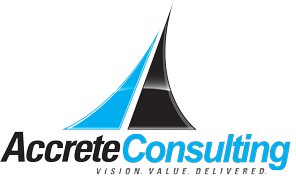Digital Transformation, IoT and Connected Service
One of the most discussed topics at the recent Digital transformation forum Accrete hosted in Singapore was the real, measurable impact these new technologies will have on service and spares businesses. How do organizations break through the hype and determine the real business potential of transformative technologies like IoT, machine learning, artificial intelligence, augmented reality and virtual reality?
Digital Transformation, IoT and Connected Service – Can they really impact my service business in a meaningful way?
One of the most discussed topics at the recent Digital transformation forum Accrete hosted in Singapore was the real, measurable impact these new technologies will have on service and spares businesses. How do organizations break through the hype and determine the real business potential of transformative technologies like IoT, machine learning, artificial intelligence, augmented reality and virtual reality?
Much has already been written by PTC and others about digital transformation, IOT and Connected Service. PTC summarizes things well as they state “No products or assets will be an island…. All products, systems, facilities, processes, workflows and people now exist in a connected world with IOT systems acting like social media networks.” Other thoughts follow.
For some time, many customers have utilized smart, connected products to enable remote monitoring and remote service; providing better service at a lower cost, reducing response times and optimizing their resource use through Connected Service. They are collecting meaningful data and turning it into information that can be acted upon; gaining insights, improving business processes and differentiating their offerings. Analysis of connected product data can improve business decisions, product design and manufacturing processes.
Customers are also improving core service business processes (i.e. billing, field service, product registration compliance, consumable management recalls, warranty management, etc.) with connected product data, benefitting in terms of reduced cycle times, improved productivity and improved accuracy. Increased speed to relevant analytics also helps companies detect and resolve customer issues more quickly, improving overall customer experience. Selling and marketing of connected products with ERP/CRM integration and new user apps creates competitive advantages and delivers revenue growth.
IOT / connected service is often grouped in categories of remote service, data analytics, data integration and value-added service enabling. The benefits of each can help your company accelerate profitable growth.
Remote service benefits include reduced call volumes, shortened call-handling time, improved troubleshooting, fewer repair visits and less travel required by onsite support and faster delivery of software upgrades.
Data analytics benefits such as identification of design, supplier or manufacturer quality issues; predictive maintenance, scheduling maintenance when required to prevent downtime; and improved product design through better understanding customer use and behavior.
Data integration benefits including improved troubleshooting and case resolution, proactive creation of service calls with accurate failure information, better recall management, more effective compliance auditing, improved installed base information and reduced warranty claims and costs.
Value-added service options enabled for customer self-service web portals, asset tracking apps with machine productivity and usage, warranty registration app, peer-to-peer machine performance apps and more.
Meaningful business metrics customers are improving by category include:
- Quality (cost of quality, warranty claims, mean time between failure)
- Delivery (remote fix percentage, uptime, remote software installation, mean time to repair)
- Customer Satisfaction (net promoter score, remote diagnosis, ease of doing business, customer self-help)
- Cost (repair cost, first-time fix, number of visits or calls to resolve)
- Commercial (Win ratio, market share, share of wallet, average selling price, attachment of service and consumables to product sales)
Don’t become Chief Veterinarian to the Dinosaurs….. Let Accrete help you gain more insight into the tangible benefits for your business that digital transformation can bring, determine the ROI and develop your digital strategy.
Author: Chris Westlake, VP Service Strategy at Accrete Consulting

0 Comments